My time in the shop has mostly been splitting and planing stock to make things from later. And trying to find room to stash all this freshly-planed stock. In between I’ve been sitting here at my desk working on my strapwork carving videos. I’m determined to get those done in the next couple of days - because they’ve gone on too long as it is. So a free-to-all post about a few odds and ends.
I never used to sign my work. Jennie Alexander had this great punch to mark her chairs. A con-joined J and A.
I read recently in her notebooks that it was one of the Shakers at Sabbathday Lake who convinced her (insisted, really) that she mark her chairs. I’ve still not hit on a method for marking post & rung chairs. Joined work I began marking when Peter Ross made me a very nice stamp with my full last name.
When I remember...it’s best struck on the pieces before they become furniture. I hit it with a 3-lb sledge hammer. Often I mark carved boxes on the end of the bottom board - where it overhangs the base of the box. Down the years, someone could replace that bottom and have an un-marked box, put an aged finish on it & pass it off as period work. In theory. I have pictures of all my work, so could get around that…but I’m thinking hypothetically.
Last month I was finishing up a couple of carved boxes and on one of them I got a different idea. Before attaching the bottom - I decided to write my name on the underside of the till. Reversed.
So when you stick a mirror (or a phone with its camera turned around) under the till, viola! A modern inscription. That’s the sort of stupid thing you can come up with working alone during a winter that’s maybe a tad too long...
That box is still here - H: 6 1/4” W: 13 3/4” D: 8 1/2”. $1,000 including shipping in the US. Send me an email if you’d like to purchase it. PeterFollansbee7@gmail.com
……………..
About the walnut log I’m working up. When I think about period work in walnut, those must have been pretty big logs they worked from, whether sawing or splitting the stock out. Mine was 20” in diameter and the widest radially-split stuff I’m getting is 4”.
Even if I had the log sawn, the widest heartwood boards would maybe be 10”. But then I think of Victor Chinnery’s book “Oak Furniture: the British Tradition.” And the walnut chair on its cover:
First - there’s the joke - a walnut chair on the cover of a book called “Oak Furniture”. Then there’s that rear panel - I measured a Salisbury wainscot chair at Vic’s house once. 13 1/4” wide PLUS the bit that fits in the frame. The seat board was 13 1/2” wide (front to back). And I’ve worked with wide walnut boards before. But I so rarely get walnut in the log, it takes me by surprise every time to see the amount of sapwood. On this 20” diameter log the sapwood’s wider than 2”. It just drives home to me how large the trees are that yield good heartwood of black walnut.
Some Boston furniture is walnut.
This chest of drawers is part of the Vander Sande sale I wrote about last month. https://live.brunkauctions.com/auctions/brunk/vander-sande-collection-session-i-march-12-2025-17333/catalog#catalog
We’ve seen others as well, below is one formerly in a private collection I once knew…
Well, for now I’ll make some walnut joined stools. But someday I wouldn’t mind trying one of those chests of drawers. Most of them are two-case assemblies:
Here’s the upper case, sitting upside down. Those long rear rails are clearly riven and hewn - I don’t remember if all the walnut was riven. Or if we could even tell. These photos I shot as slides 25 years ago…
The walnut chests of drawers figure into an article I worked on with Bob Trent, published in 2010 - https://chipstone.org/article.php/612/American-Furniture-2010/Reassessing-the-London-Style-Joinery-and-Turning-of-Seventeenth-Century-Boston




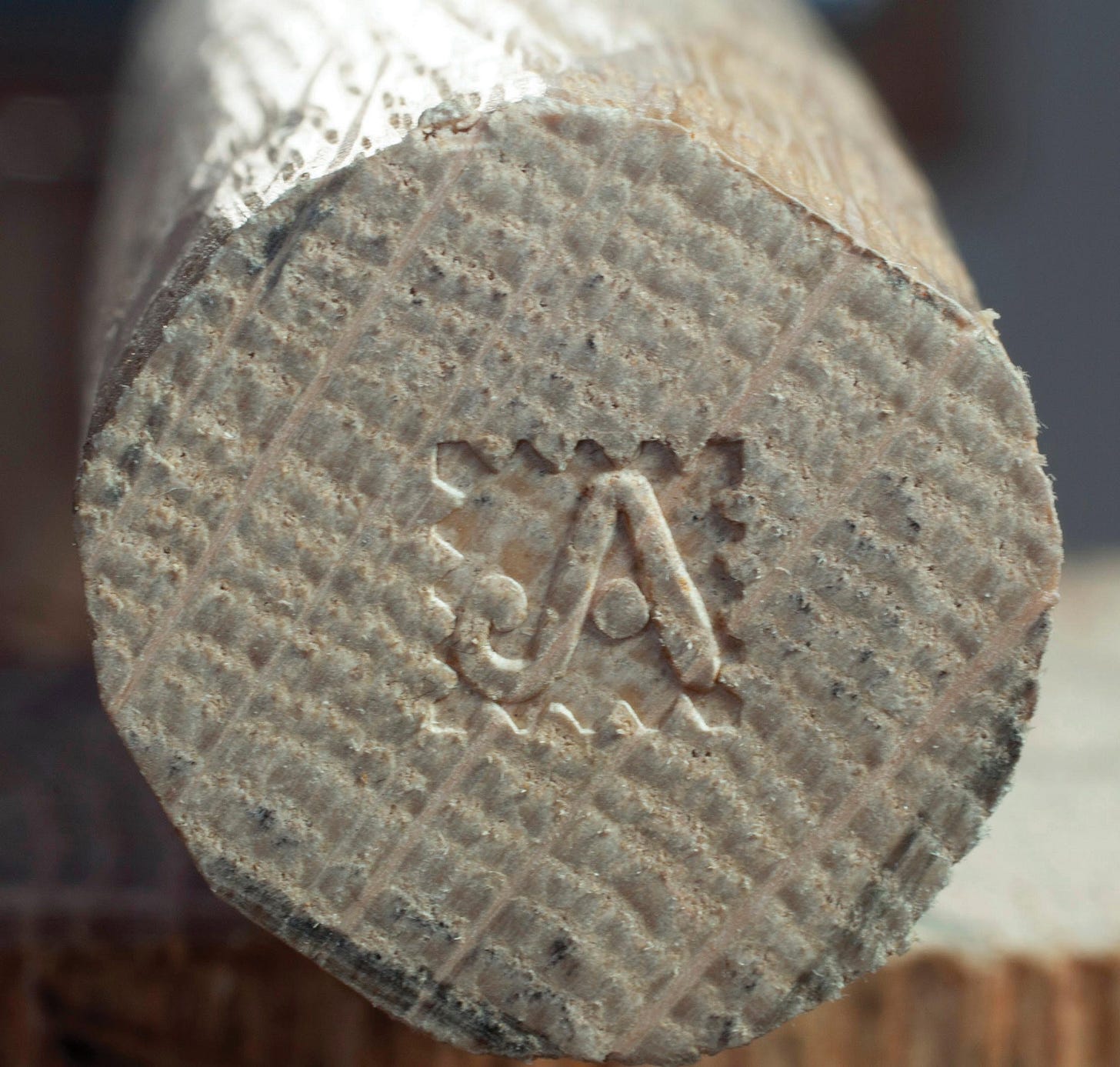
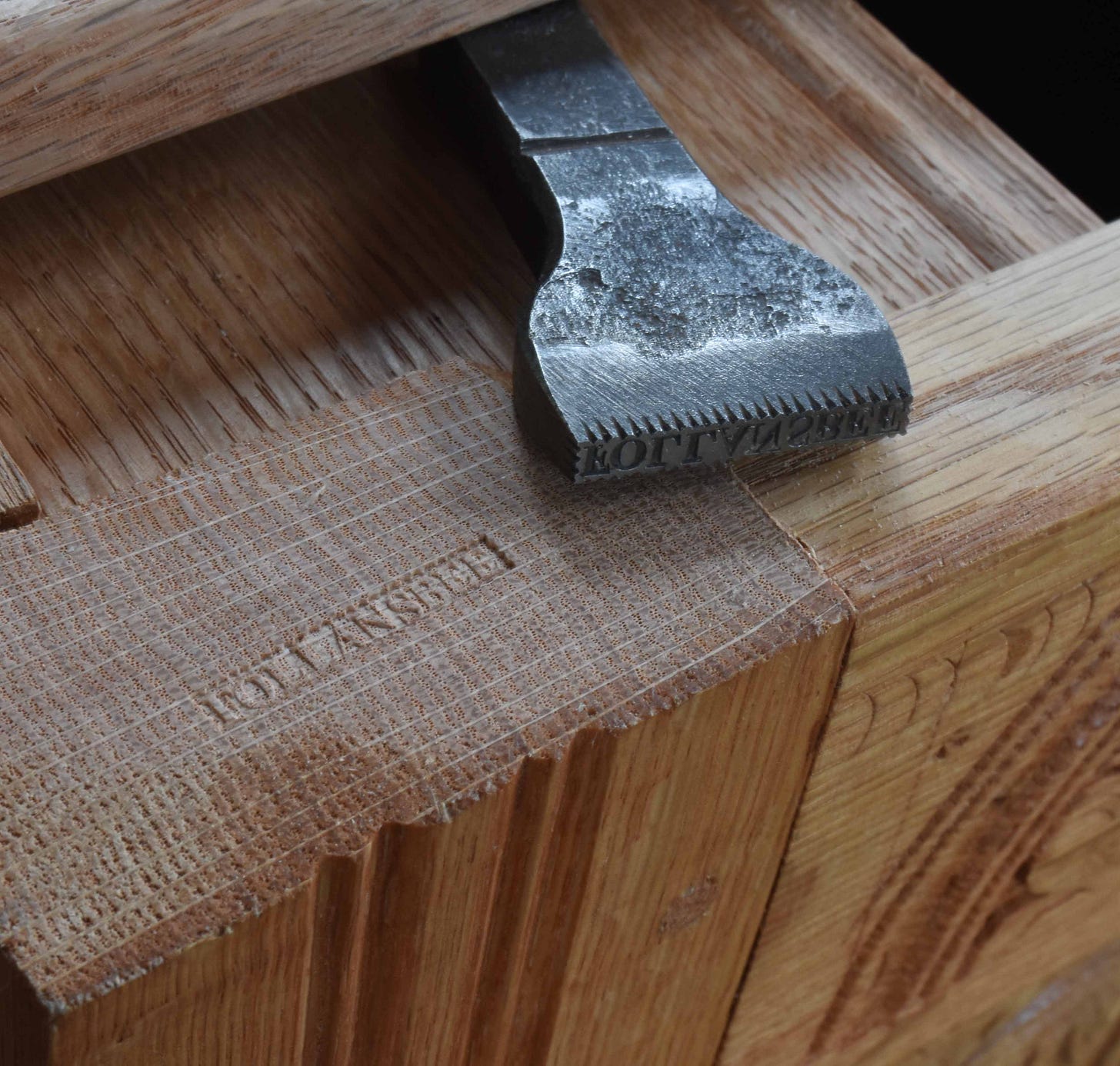

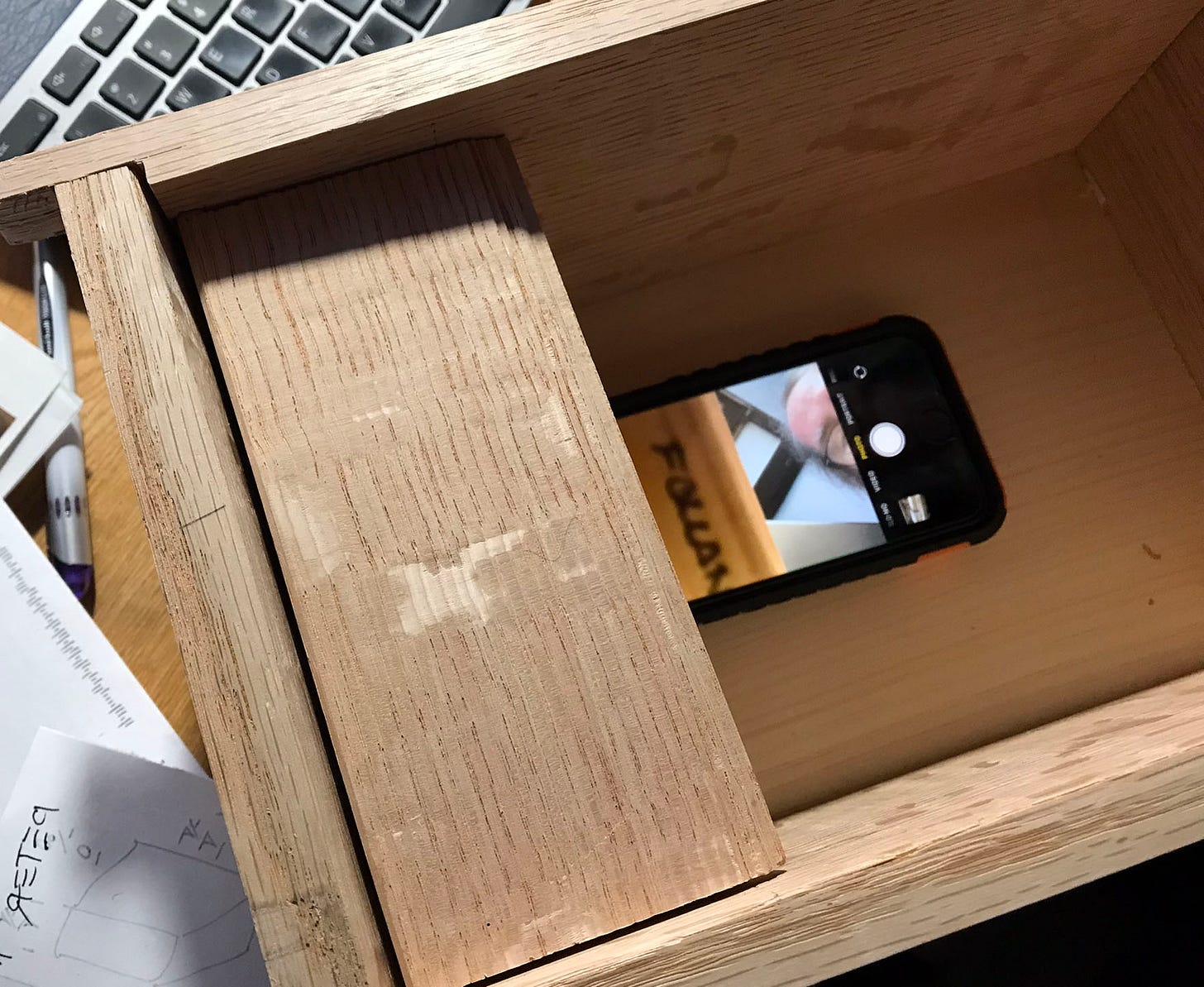
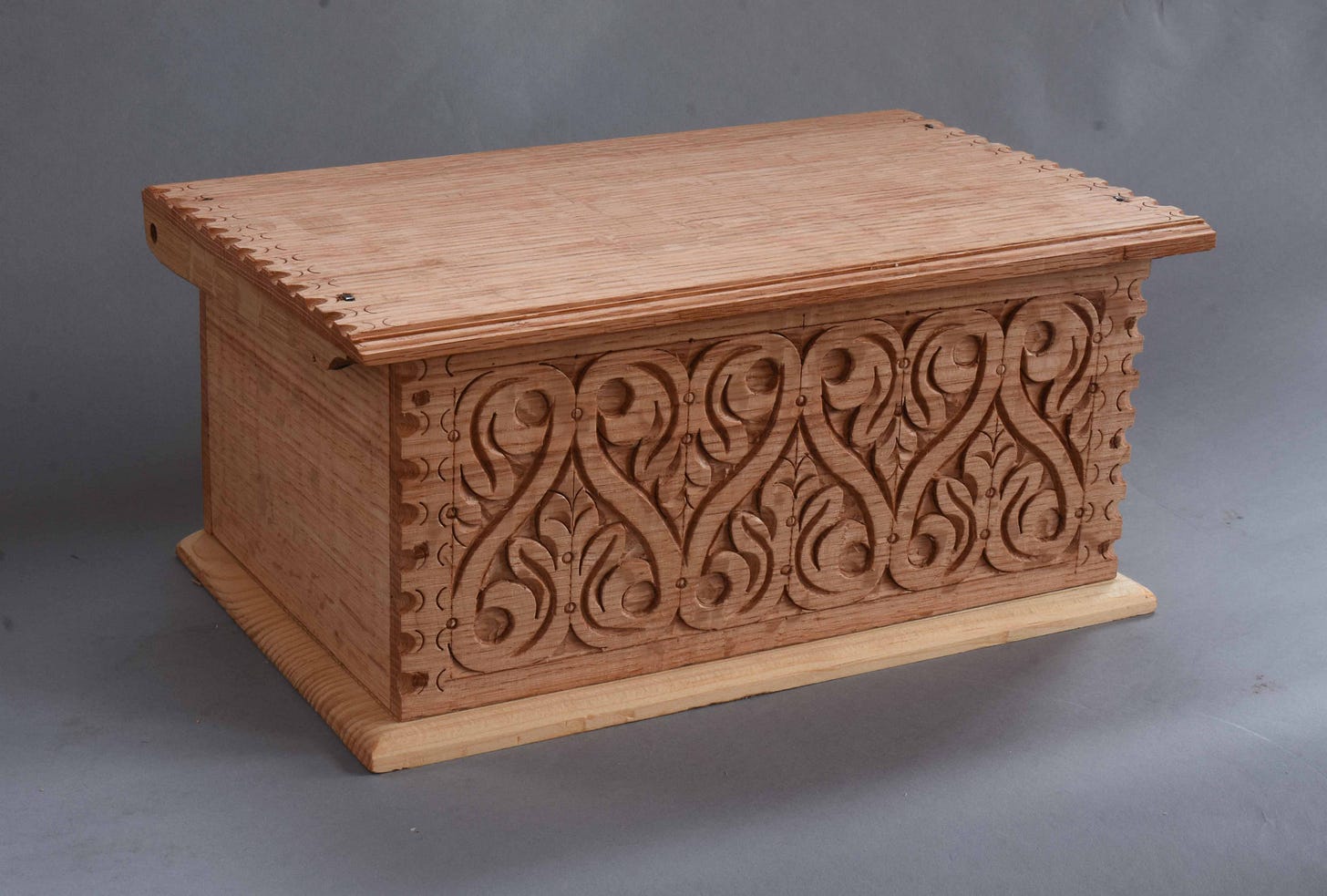





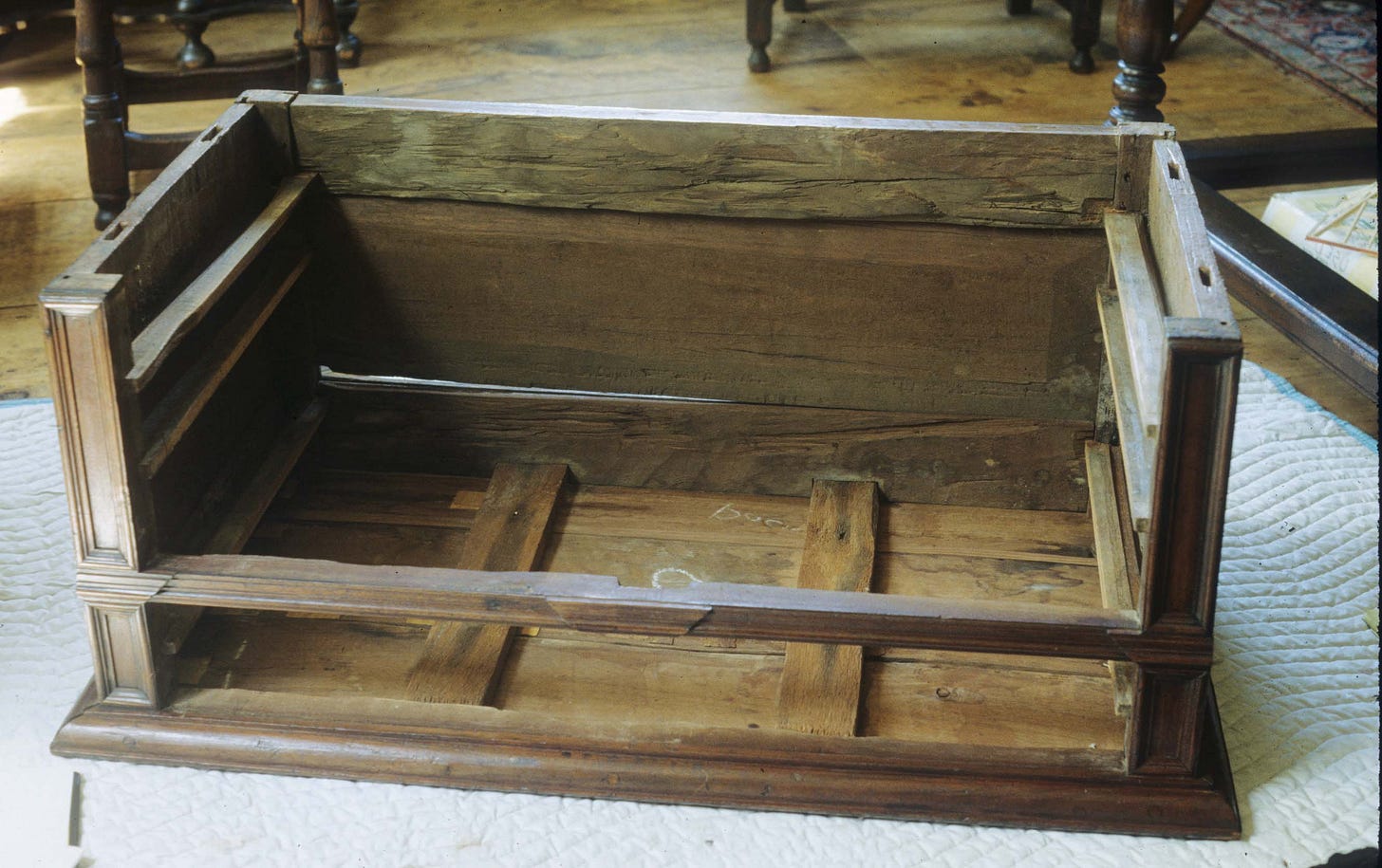
like yoiur new marking system--pretty slick and very 21st c. I guess.
Peter, after all that hard work riving and planing to rough shape, how/where do you stash your precious stock to await final processing? Stickering in the rafters? Standing in the corner by the stove? Do you have a solar kiln? How do you know when it’s ready to carve and join?
Best regards,
Mike